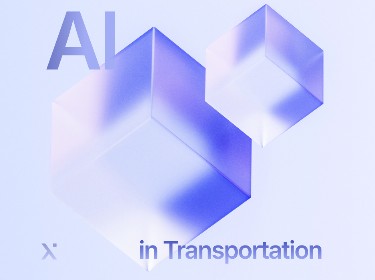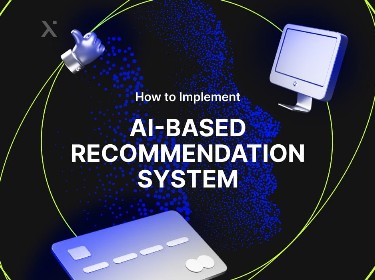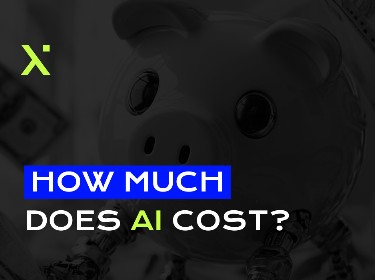AutoML, the latest advancement in machine learning, takes on time-consuming tasks to speed up model-building. But can AutoML really create better, scalable models with smarter insights?
Automated machine learning serves as a foundational concept that empowers domain experts to utilize data for improving their tasks, automating repetitive activities, and democratizing machine learning for all.
The global Automated Machine Learning (AutoML) market is valued at $1 billion in 2023.By the end of 2028, it is projected to reach approximately $6.4 billion. The remarkable growth trajectory of the AutoML market underscores its pivotal role in shaping the future of machine learning and automation technologies.
In this article, we will delve deeper into the phenomenon of AutoML, explore its benefits and use cases, and compare some of the popular automated machine learning tools. Let’s begin!
From AutoML insights to custom software solutions, supercharge your business with our expert development services
What is automated machine learning (AutoML)?
Automated machine learning is a technology that automates various stages of machine learning development services, including data preprocessing, feature selection, hyperparameter tuning, and model selection. Its goal is to streamline and simplify the traditionally intricate and time-consuming aspects of creating effective ML models.
It is indeed true that machine learning models offer businesses valuable insights. However, the development of these models often falls on staff lacking significant expertise in ML. Without automation, data scientists typically explore numerous machine learning pipelines and then choose the best-performing ones or continue refining the models based on analysis.
By offering a straightforward and user-friendly interface for training and deploying models, AutoML aims to simplify the process of developing machine learning models for non-experts through an automated experience.
How does AutoML work?
![]()
By automating repetitive tasks, AutoML effectively streamlines complex stages within the machine learning workflow, resulting in increased efficiency. This process generally encompasses the following steps:
Step 1. Preprocessing and data exploration
This stage of the machine learning automation process involves the identification of column types, conversion to numerical data, and management of missing values. Furthermore, it includes the identification of variables with low predictive power and the elimination of highly correlated ones.
Step 2. Feature extraction
During this stage, feature engineering and normalization tasks are commonly conducted. Specifically, from an extensive feature set, features demonstrating high predictive power are automatically extracted. This process enhances the data’s suitability for training machine learning models and subsequently bolsters the model’s accuracy.
Step 3. Model selection and hyperparameter tuning
The AutoML system utilizes a range of methods and hyperparameters to train several machine learning models using preprocessed data. Through this process, the system can identify the model that works best with the data.
Step 4. Deployment preparation
After evaluating competing models based on desired metrics, users gain the capability to employ the trained model for predictions or actions on new, unseen data. This is typically achieved by deploying the model as a web service, granting access to other users or applications.
Despite its impressive array of features and the capability to automate the development process, AutoML should not be regarded as a technical panacea to replace data scientists. Instead, it should be seen as a generalized search concept equipped with specialized search algorithms, aiming to identify optimal solutions for each component of the machine learning pipeline.
In reality, data scientists continue to play a crucial role in tasks like designing experiments, interpreting results, and maintaining models throughout the entire lifecycle of these machine learning models.
Looking for ways to extract valuable insights from your business data? Turn to our big data development services
Why do we use AutoML? Key benefits
![]()
With automated machine learning seamlessly integrated into services, a multitude of advantages come to the forefront, shaping a transformative landscape. These include substantial time savings, enhanced accessibility, transparency, amplified efficiency, refined performance optimization, and the democratization of AI. Let’s take a closer look at each of these benefits that AutoML brings to the table.
Time-saving
AutoML assists you in transferring your data to the training algorithm and automatically finds the most effective neural network architecture for the given problem.
The exact duration relies entirely on the data volume fed into the model and the quantity of different models employed. For instance, standard structured datasets might require only a few seconds. In larger datasets, and when the user intends to assess numerous model variations using different algorithms, it might extend to days or even weeks.
Nonetheless, it remains a fact that AutoML accelerates deployment by automating data processing and algorithms, eliminating manual analysis and substantially reducing deployment time.
Accessibility
AutoML lowers the barriers to entry for model development, allowing industries that were previously excluded to harness the benefits of machine learning. This, in turn, nurtures opportunities for innovation, enhances market competition, and propels overall advancement.
Scaling machine learning across diverse industries benefits all organizations by enhancing productivity and effectiveness in the areas where it is most crucial.
Transparency
As businesses grow, industry trends evolve, and data volume increases, AutoML paves the way for improved models by minimizing the risk of inaccuracies arising from bias or human error. For example, AutoML ranks automatically generated models based on their performance, allowing you to swiftly discern how the model was constructed and its components within seconds.
With this advantage, businesses can innovate with confidence, enjoy greater transparency, generate tangible business benefits, and achieve a higher ROI.
Efficiency
AutoML simplifies the process of applying machine learning to real-world problems. By reducing the complexity of creating, testing, and deploying machine learning frameworks, it streamlines all the stages necessary to address business concerns, thereby enhancing productivity and efficiency.
AutoML also iterates through various models and performs hyperparameter optimization, yielding high-performance models that would demand a significant amount of time if executed manually.
Performance optimization
AutoML empowers businesses to swiftly develop and deploy highly accurate predictive models, enabling data-driven decisions that optimize resource allocation and minimize operational inefficiencies. By automating complex processes, AutoML enhances forecasting accuracy, leading to improved inventory management and reduced revenue loss due to stockouts.
Democratization of AI
The demand for expert-level knowledge in ML is on the rise, yet the supply side is struggling to keep pace. The U.S. Bureau of Labor Statistics forecasts a substantial growth rate of nearly 28% in the number of jobs demanding data science skills by 2026. To bridge this gap, AutoML comes into play, automating processes that might be seen as too complicated for anyone other than an expert in the field.
Thanks to automation, artificial intelligence development and machine learning software have become user-friendly and accessible, enabling analysts, marketers, and IT personnel without a data science background to seamlessly integrate AI and ML into their daily operations.
When do we use AutoML? Main use cases
![]()
AutoML finds its application across various domains. Its main use cases encompass business performance analysis, visual inspection and classification, fraud detection and prevention, predictive maintenance, and personalization. Let’s delve deeper into these use cases.
Business performance analysis
In today’s fast-paced business landscape, harnessing technology to analyze and optimize performance has become essential for sustainable growth.
One prime example of this is seen in the retail industry, where AutoML revolutionizes the way companies handle vast volumes of customer data. By seamlessly collecting and processing this data, AutoML empowers retailers to forecast sales more accurately, enabling them to identify in-demand products and manage inventory levels by simultaneously assessing product availability.
Check out our retail software development, where we seamlessly blend tech and expertise to enhance customer experiences and optimize business operations
Moreover, the transformative potential of AutoML isn’t confined to retail alone; companies across various sectors are finding innovative ways to leverage its capabilities.
An illustrative case is Anaplan, a leading enterprise cloud software provider, which harnessed AutoML to enhance its business outcomes. Impressively, 70% of predictions generated by AutoML exhibited accuracy equal to or exceeding those made by human experts.
Visual inspection and classification
AutoML simplifies the development of machine learning models that can accurately categorize and classify images, allowing industries such as manufacturing and quality control to streamline their inspection processes and ensure consistent product quality.
AutoML Vision is one such solution. This automated machine learning platform from Google trains machine learning models to classify images based on user-defined labels. It categorizes them into tens of thousands of predefined types by detecting individual objects and faces within images, as well as by identifying and reading printed text contained within images.
Fraud detection and prevention
AutoML accelerates the development of ML models for fraud detection. These models, trained on actual fraud scenarios, can seamlessly integrate into real-time account login flows, identifying compromised accounts while minimizing disruption for legitimate users.
Standard Bank, a notable South African financial services group, chose Amazon Fraud Detector to mitigate the business’s exposure to fraudulent risks. Leveraging this tool, the company’s capacity to identify fraudulent incidents before processing claims increased by over 100% across the board.
Introduce yourself to Web3 Antivirus — a web3 security solution that utilizes ML to instantly detect fraudulent activity and dangerous websites
Predictive maintenance
Automated machine learning empowers businesses to identify potential machine issues and enhance system accuracy, thereby reducing operational costs. Furthermore, it facilitates swift decision-making in response to errors or malfunctions and makes corrective maintenance faster, more efficient, and sustainable.
Personalization
From unlocking information trapped in product descriptions or other unstructured text, to customizing recommendations by promoting specific items based on business goals, AutoML helps businesses deliver good customer experience at the right time and place.
As a startup with a small ML team, Calm, a wellness application, teamed up with Amazon Personalize to launch its initial set of content recommendations. Whether it’s on-demand videos, music, podcasts, or other forms of media, the recommendations generated from Amazon Personalize resulted in a 3.4% increase in daily engagement among Calm’s members.
What are the most widely used AutoML tools and solutions?
AutoKeras, Google Cloud AutoML, TPOT, RapidMiner, H2O AutoML, DataRobot, and MLBox are well-known choices for automating machine learning tasks. Let’s delve deeper into each of these tools.
AutoKeras
AutoKeras is an open-source technology that utilizes the deep learning library Keras. This tool can automate classification and regression tasks within deep learning models for images, text, and structured data. AutoKeras primarily employs Neural Architecture Search to optimize the selection of machine learning algorithms, pipeline design, and code writing.
Google Cloud AutoML
Google Cloud AutoML is a suite of AutoML tools designed for developing tailored machine learning models. Among its components, Vertex AI stands out as the most advanced, providing a platform for constructing models for tasks such as classification, regression, and forecasting across image, video, text, and tabular data.
Moreover, Google’s AutoML provides intriguing advanced configuration choices that could be harnessed to streamline existing ML workflows.
TPOT
TPOT is one of the pioneering open-source approaches offered by the AutoML software community in the USA. It depends on the Python-based scikit-learn library and leverages its classifiers. A wide range of associations are analyzed to find the most suitable one for the dataset.
RapidMiner
RapidMiner provides a single place for the entire data science lifecycle, from data access to managing models in production.
RapidMiner enables complete automation for those new to data science, and also provides an integrated JupyterLab environment for field experts. Additionally, it offers a visual workflow designer to bridge gaps and provide a common language for model creation.
H2O AutoML
H2O AutoML was created to meet the demand of ML developers. The H2O AutoML software supports both classical ML models and neural networks. Its primary application area is the automation of the ML workflow. Models are designed to be automatically trained and fine-tuned within users’ specified time limits.
DataRobot
DataRobot is an AutoML tool for predictive analytics. It assists data science experts in developing and implementing accurate predictive analytics services while also synchronizing time periods with other software.
Furthermore, it boasts an expanding library of newly developed algorithms and provides access to prototypes for dataset preparation and feature selection.
MLBox
MLBox is a prominent AutoML software and Python library that offers a range of valuable features, including robust feature selection and leak detection, precise hyperparameter optimization in high-dimensional spaces, and model interpretation for accurate predictions. MLBox efficiently manages tasks such as data preparation, model selection, and hyperparameter search.
Read this article to delve into the ten most popular applications of machine learning in the business landscape
Final thoughts
Machine learning has achieved considerable success in recent years, with more industries now depending on it. From healthcare to finance, from retail to manufacturing, machine learning algorithms are revolutionizing decision-making processes, optimizing operations, and enhancing customer experiences.
The ongoing evolution of machine learning promises even more sophisticated applications, fostering a future where automation and human expertise collaborate seamlessly to create solutions we’ve only dreamed of.
In this dynamic landscape, PixelPlex stands out as a seasoned company delivering ML consulting services.
Our expertise extends to the following areas of ML and AI development:
- Traditional machine learning and AutoML
- Deep learning
- Computer vision services and solutions
- ML for fraud detection
- Data analytics and business intelligence
We understand that businesses face diverse challenges in implementing machine learning solutions, and PixelPlex offers a comprehensive suite of services designed to navigate these complexities and drive tangible results.
Reach out to us to start your machine learning journey, and let us empower your business with tailored solutions that harness the full potential of data-driven technology.




